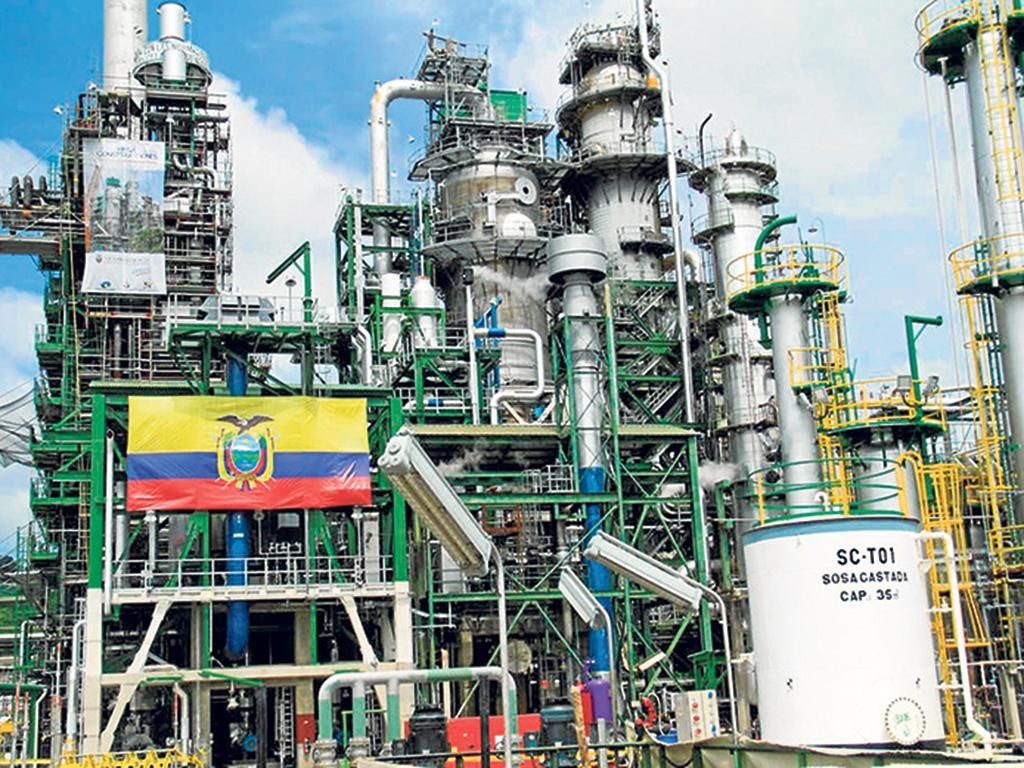RIO DE JANEIRO, BRAZIL – The oil, mining, and energy industry generated US$9.7 billion to Ecuador’s treasury in 2021. The figure corresponds to the resources obtained from crude oil and derivatives exports, electricity exports, mining royalties, and other taxes collected from these strategic sectors.
It was informed on March 15 during the public deliberation of Accountability 2021 of the Ministry of Energy and Non-Renewable Natural Resources, where the most important milestones of the past year were presented.

Among them, the following were mentioned:
HYDROCARBONS
- In 2021 an accumulated production of 6.6 billion barrels of oil was recorded. There was an increase in the drilling of wells compared to 2020: 66 correspond to the public company Petroecuador and 45 to private companies.
- Reform to the Hydrocarbons Law and its regulations allows the delegation of oil exploration and exploitation of oil fields in production by the private sector and the voluntary migration of oil contracts.
- Definition of a projects portfolio investment in production, transportation, storage, and offshore.
- Authorization for importing hydrocarbons, liquid fuels, and natural gas by the private sector.
- Restart of operations in the Trans-Ecuadorian Oil Pipeline System (SOTE) and the Heavy Crude Oil Pipeline (OCP), following the effects of erosion in the tributaries of the Coca River.
ELECTRICITY
- In 2021, the generation capacity of the National Interconnected System reached 7,357.8 megawatts. Energy production was 28,161 gigawatt-hours -GWh- 93% of the generation came from renewable energy.
- Distribution and commercialization coverage was 97.30% nationwide.
- Export of surplus electricity to Colombia and Peru for more than US$15 million (522.85 GWh).
- Strengthening the electricity system with 16.31 million beneficiaries nationwide with the incorporation of generation, transmission, and distribution works.
- Launching three public selection processes to attract private investment for US$1.9 billion in the Non-Conventional Renewable Energy Block, Natural Gas Combined Cycle, and the Northeastern Transmission System.
- In the regulatory area, the Organic Law on Energy Efficiency regulations were issued.
MINING
- Exports of mining products totaled US$2.1 billion, placing mining as the fourth largest sector, after petroleum, shrimp, and bananas.
- Small-scale mining accounted for US$513 million, 39% more than in 2020.
- Investments for mining activities were estimated at US$975 million, and approximately 35,000 direct jobs were generated.
- The opening of the mining cadastre was defined in two stages. The first one, called analogous cadastre, advances with the substantiation of procedures pending before the cadastre’s closing in 2018.
- Technical remediation in the sinkhole occurred in Zaruma due to illegal mining practices. A comprehensive solution is being developed, and the work will be completed in December 2022.
MEDIUM-TERM PLANS
Ecuador plans to increase its production to 800,000 barrels of crude oil per day by 2025, for which it seeks to rely on private enterprise. According to recent data, the government is seeking US$12 billion to achieve its goal.
The manager of Petroecuador, Ítalo Cedeño, pointed out a few days ago that it is necessary to have private capital and the appropriate regulations to provide legal certainty to those seeking to invest in the hydrocarbons sector to fulfill these projects on schedule.
“Approximately 45 billion barrels are in place, and only 14% are produced, evidencing that the resources are not adequately exploited. More than an oil company, we are a hydrocarbon company, and we are going to incorporate associated gas and liquids into production since an oil country must count the equivalent barrels of oil that come from gas to take advantage of these resources and make the company more efficient,” he added.
By the end of 2022, EP Petroecuador is expected to close with an average production of 495,000 barrels of oil equivalent per day due to the drilling campaigns planned for this year.
With information from Bloomberg Línea

